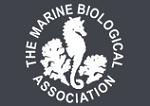APHOTOMARINE
An educational resource dedicated mainly to the photography
and diversity of marine life that can be found in coastal waters
and intertidal areas of Great Britain and Ireland by David Fenwick.

Cancer pagurus
- underwater 1
Edible or Great crab
Cancer pagurus
- underwater 2
Edible or Great crab
Cancer pagurus
- underwater 3
Edible or Great crab
Cancer pagurus
- dorsal view 1
Edible or Great crab
Cancer pagurus
- ventral view 1
Edible or Great crab
Cancer pagurus
- abdomen 1
Edible or Great crab
Cancer pagurus
- front of carapace / eyes 1
The female specimen above was found in a crevice on the extreme lowershore at Godrevy Point, near Hayle, Cornwall, 27.09.18. The specimen was returned unharmed despite being of edible size because Godrevy Point is a Site of Special Scientific Interest (SSSI).
Edible or Great crab
Cancer pagurus
- front view 1
Edible or Great crab
Cancer pagurus
- front view 2
Edible or Great crab
Cancer pagurus
- dorsal view 2
Edible or Great crab
Cancer pagurus
- dorsal view 3
Edible or Great crab
Cancer pagurus
- dorsal view 4
Edible or Great crab
Cancer pagurus
- face view / macro 1
Edible or Great crab
Cancer pagurus
- claw / macro 1
Edible or Great crab
Cancer pagurus
- adult claw 1
Edible or Great crab
Cancer pagurus
- abdomen / underside 1
Edible or Great crab
Cancer pagurus
- claw / knipper 1
Edible or Great crab
Cancer pagurus
- in crevice / lowershore 1
Edible or Great crab
Cancer pagurus
- softback / recently molted 1
Edible or Great crab
Cancer pagurus
- changing colour 1
Edible or Great crab
Cancer pagurus
- box of freshly caught crab 1
Edible or Great crab
Cancer pagurus
- on sale Newlyn Fish Festival 1
Edible or Great crab
Cancer pagurus
- on sale Newlyn Fish Festival 2
Edible or Great crab
Cancer pagurus
- on sale Newlyn Fish Festival 3
Images taken from all over Devon and Cornwall.
The parasitic barnacle, Sacculina inflata, can be found on the abdomen of the Edible crab, Cancer pagurus.
Scientific and European Names:
Cancer pagurus, Edible crab, Great crab, Taschenkrebs, Noordzeekrab, Tourteau, Buey de mar, Granciporro.
APHOTOMARINE supports open source data recording and sharing for the benefit of wildlife, recorders, research, science and education. The project recommends the following websites and works with the following bodies and organisations.
The Marine Biological Association or MBA, based in Plymouth, is one of the world’s longest-running societies dedicated to promoting research into our oceans and the life they support. Since 1884 the MBA has been providing a unified, clear, independent voice on behalf of the marine biological community.It has a growing membership in over 40 countries.
The National Biodiversity Network or NBN is a charity that supports open source data sharing and recording supporting conservation, science and education. "Why do recorders need open source?". Simply because it supports the core values of wildlife recording and the free use of records and data over a very wide network that includes partners like the Natural History Museum.
The taxonomy used here is based on that of the following database, which is also used by the MBA, NHM and the NBN.
The World Register of Marine Species or WoRMS.

